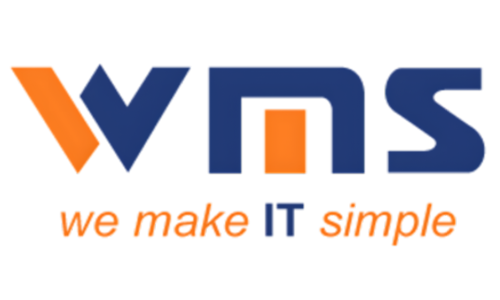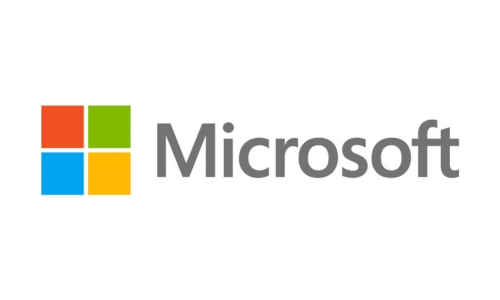What is ERP? A Beginner’s Guide to Enterprise Resource Planning
Imagine running a large restaurant with multiple departments—kitchen, billing, inventory, staff management, and customer service. Now, what if each department worked in isolation, without communicating with the others? Orders might get delayed, inventory might run out, and customer service could suffer. That’s exactly what happens in businesses without a centralized system.
This is where ERP (Enterprise Resource Planning) comes in! ERP acts as a single brain for your entire business, helping all departments work together smoothly. Whether you run a small business or a multinational company, ERP helps you stay organized, efficient, and profitable.
Let’s dive into the world of ERP in the simplest and most engaging way possible!
What is ERP?
ERP (Enterprise Resource Planning) is a software system that helps businesses manage their daily activities like accounting, inventory, human resources, customer service, and more—all in one place.
Think of it as a super-smart assistant that connects different departments, ensuring they share information and work in sync. Instead of using separate tools for different tasks, ERP allows everything to be managed in one system.
Example:
Let’s say you own a clothing store. Without ERP:
- Your sales team might sell products that are out of stock.
- Your accounting team may struggle to keep up with invoices.
- Your inventory manager may not know when to restock.
With ERP, all these departments share real-time information, ensuring no confusion, delays, or errors.
Why Do Businesses Need ERP?
Every business—big or small—has multiple moving parts. ERP keeps everything running smoothly. Here’s why businesses love ERP:
- Centralized Information
Instead of storing data in different places (spreadsheets, emails, or different software), ERP stores everything in one single system.
- Improved Efficiency
Since departments are connected, employees spend less time searching for information and more time focusing on work.
- Better Decision Making
Managers can see real-time reports, track progress, and make informed decisions quickly.
- Cost Savings
By reducing manual work, ERP helps businesses save money by automating tasks and improving workflow.
- Scalability
ERP grows with your business. Whether you’re running a small startup or a global company, ERP can adapt to your needs.
How Does ERP Work?
ERP connects all the major parts of a business into a single system. Let’s break it down:
| Department | How ERP Helps |
| Finance & Accounting | Automates invoicing, budgeting, and financial reporting. |
| Inventory Management | Tracks stock levels in real-time and prevents shortages. |
| Human Resources (HR) | Manages employee records, payroll, and recruitment. |
| Customer Relationship Management (CRM) | Keeps track of customer interactions, orders, and feedback. |
| Supply Chain Management | Helps businesses manage suppliers, shipments, and deliveries. |
By integrating all these processes, ERP ensures smooth communication between departments.
Types of ERP Systems
There are three main types of ERP systems, and each serves different business needs:
- On-Premise ERP
- Installed on company-owned servers.
- Gives businesses full control over data.
- Best for large companies with IT teams.
- Cloud-Based ERP
- Hosted on remote servers and accessed via the internet.
- No need for expensive hardware.
- Great for small and medium-sized businesses.
- Hybrid ERP
- A mix of on-premise and cloud ERP.
- Allows companies to keep sensitive data in-house while using cloud features.
How ERP Helps Different Types of Businesses
Every business operates differently, but most face similar challenges like managing data, improving efficiency, and keeping processes connected. ERP systems help solve these issues by bringing everything into one unified platform.
| Business Need / Use Case | How ERP Helps |
|---|---|
| Growing businesses managing too many manual tasks | Automates daily operations, reduces errors, and improves overall productivity. |
| Companies struggling with disconnected systems | Centralizes data across departments like finance, sales, inventory, and HR. |
| Organizations needing better decision-making | Provides real-time dashboards and analytics for faster, smarter business decisions. |
| Businesses with inventory or supply chain activities | Tracks stock levels, orders, suppliers, and logistics in one place. |
| Service-based companies needing better customer handling | Streamlines scheduling, billing, CRM, and customer communication. |
| Companies preparing for expansion | Offers scalable modules that grow with the business without replacing the system. |
| Teams needing transparency and coordination | Improves communication and workflow between departments. |
Each of these solutions offers different benefits based on company size, industry, and specific needs.
Real-Life Examples of ERP in Action
- Amazon
Amazon uses ERP to manage its massive supply chain, track millions of orders, and ensure timely delivery.
- Toyota
Toyota uses ERP to streamline manufacturing processes, maintain quality control, and manage suppliers.
- Coca-Cola
Coca-Cola integrates ERP to track its worldwide production, sales, and distribution channels efficiently.
How to Choose the Right ERP for Your Business
Selecting the right ERP software depends on your business size, budget, and needs. Here’s how to choose wisely:
- Identify Business Needs – What problems do you want ERP to solve?
- Set a Budget – ERP software ranges from affordable to high-end.
- Check Scalability – Make sure the ERP can grow with your business.
- Look for Industry-Specific Features – Some ERPs cater to specific industries like manufacturing or healthcare.
- Test Before Buying – Many ERP providers offer free trials or demos.
Common Challenges with ERP Implementation
While ERP offers many benefits, businesses may face challenges during implementation. Here’s what to watch out for:
- High Initial Costs – ERP systems can be expensive, but they offer long-term savings.
- Employee Resistance – Some employees may resist change, requiring proper training.
- Complex Setup – Implementing ERP can take time and effort.
- Customization Needs – Every business is unique, so ERP may need custom configurations.
The good news? With the right planning and training, businesses can overcome these challenges and enjoy the full benefits of ERP.
Conclusion
ERP is like the control center of a business, connecting all departments and ensuring smooth operations. Whether you run a small bakery or a global enterprise, ERP helps improve efficiency, reduce errors, and boost productivity.

 SAP Cloud ERP Private
SAP Cloud ERP Private SAP Cloud ERP
SAP Cloud ERP SAP Business One
SAP Business One SAP Business ByDesign
SAP Business ByDesign SAP SuccessFactors
SAP SuccessFactors SAP Ariba
SAP Ariba SAP Sales Cloud
SAP Sales Cloud SAP Concur
SAP Concur SAP Business Technology Platform
SAP Business Technology Platform SAP Analytics Cloud
SAP Analytics Cloud SAP Signavio
SAP Signavio SAP Business One FASHION
SAP Business One FASHION SAP Business One PAYROLL
SAP Business One PAYROLL SAP Business One PDC
SAP Business One PDC SAP Business One PDT
SAP Business One PDT SAP Business One REAL ESTATE
SAP Business One REAL ESTATE SAP Business One RENTAL
SAP Business One RENTAL



